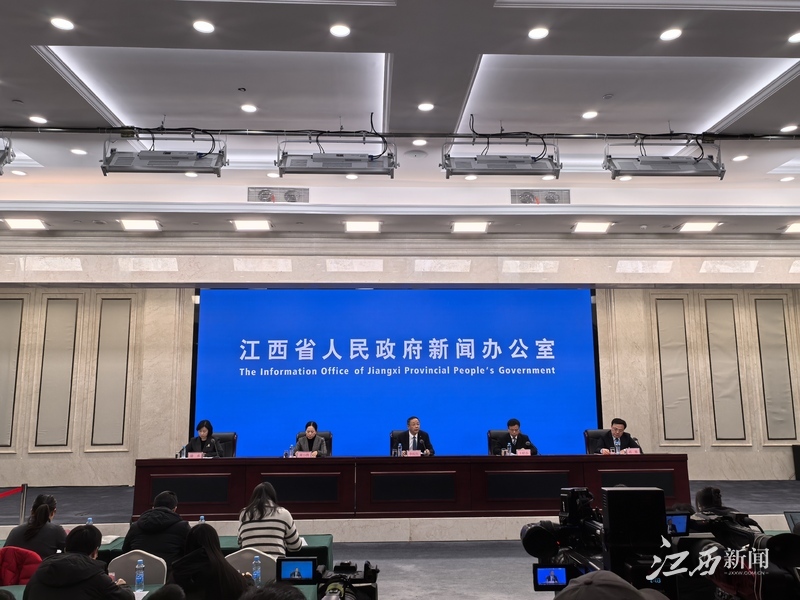Is The Gap In Power Between China And The United States Obvious? US Media: China Either Makes Concessions To The US Or Fails Its Choice
Is The Gap In Power Between China And The United States Obvious? US Media: China Either Makes Concessions To The US Or Fails Its Choice
On the United States, although it is trying to put pressure on China through tariffs, levied tariffs on $60 billion of Chinese goods from 2018 to 2020, the actual effect is not ideal. During a military exercise in 2023
In 2023, the US media released an article that attracted widespread attention, pointing to the challenges China faces in the competition with the United States, and putting forward the conclusion that China seems to have to choose to bow its head or lose. The title of the article is very provocative, and the wording is like proclaiming the result of a war, which has sparked heated discussions in the international community. In fact, behind this article is the complex game of think tank deduction, military confrontation and economic data. The gap between China and the United States is as the media said, unfathomable. Are there other factors worth discussing about how China catches up?

In recent years, Sino-US relations have been like a roller coaster ride, with the turmoil changing. The situation has become increasingly tense since the Trump administration launched its trade war in 2018. They first ignited the fuse and signed a memorandum to impose up to 25% tariffs on $34 billion of Chinese goods, accusing China of "stealing" US intellectual property. Faced with this provocation, China responded quickly, and the Ministry of Commerce also took corresponding countermeasures, imposing tariffs on US goods in a reciprocal way, creating a situation of being pointed at the top.
Entering the 2020s, the friction between the two sides is not only limited to the trade level, but also expanded to a technological blockade. Huawei, ZTE and other companies were included in the "entity list" by the United States, and chip supply was severely affected. On the Taiwan Strait issue, the situation is becoming increasingly tense. In 2022, U.S. House Speaker Pelosi visited Taiwan, which caused an uproar. The Chinese military immediately launched a large-scale military exercise in areas around the Taiwan Strait, showing a strong intimidation intention.

By early 2023, 24 wargame deductions conducted by the Center for Strategic and International Studies (CSIS) in the Taiwan Strait showed that the winning rate of the US side was as high as 92%. Once this report was released, it made the American media excited as if it was injected with chicken blood. Bloomberg published a remarkable article in June with a straightforward title, saying that China has only two ways to go before the U.S. military: concessions or failure.
This statement undoubtedly seems too confident, but if you analyze the deduced data and assumptions in depth, you will find that it is obviously biased towards the US side. The deduction assumes that the combat scenario is far away from China's coast and bypasses China's strong defensive advantage. A spokesperson for the Chinese Foreign Ministry quickly refuted this, emphasizing that any fantasy that harms China's interests is nonsense and reiterated China's firm position.

However, the background of this game is not limited to the military level. In the economic field, although the United States is still the world's leader, its debt crises frequently occur. Wall Street even held its breath for a while during the debt ceiling negotiations in 2023. China's economy maintained steady growth, with GDP in 2022 reaching US$17.96 trillion. Although it still lags behind the US$25.46 trillion in the United States, its growth rate is far beyond the United States. Especially in the track of cutting-edge technologies such as artificial intelligence and quantum computing, the competition between China and the United States is becoming increasingly fierce, and the global attention is also firmly attracted by this silent competition.

Specifically, although China's economic foundation is more fragile than that of the United States, its growth rate is very impressive. In 2022, China's economic growth rate reached 3%, significantly higher than the 1.9% in the United States. The port is full of containers, and freighters continue to enter and exit, presenting a busy scene. Especially in countries along the "Belt and Road", China's infrastructure construction is gradually spread across Africa and Southeast Asia, and its economic influence is increasing.

On the United States, although it is trying to put pressure on China through tariffs, levied tariffs on $60 billion of Chinese goods from 2018 to 2020, the actual effect is not ideal. China has successfully alleviated external pressure through strategies of expanding domestic demand and diversifying its market. In 2023, the United States even hoped that China would increase its holdings of U.S. bonds to help its fiscal difficulties, which was almost unimaginable ten years ago.

At the same time, the gap in the military field still exists, but is far less exaggerated than the media describes. With its global military base network, the United States has 11 nuclear-powered aircraft carriers, and its military expenditure will reach US$877 billion in 2023, accounting for nearly 40% of global military expenditure. Although China's military expenditure is only one-third of that of the United States, its military efficiency has not been reduced as a result.

In the air force, the speed of modernization is eye-catching. The J-20 fighter is equipped with digital array radar, and its intelligence processing and anti-interference capabilities are ahead of similar equipment. UAV technology is also developing rapidly. China's attack-11 unmanned fighter and reconnaissance-8 high-speed reconnaissance aircraft have excellent performance, gradually filling the technical gap of the US military in related fields. In a military exercise in 2023, the Chinese drone force demonstrated its precise strike capabilities, subverting the outside world's perception of the United States' monopoly on drone technology.

CSIS's deduction report claims that the US military's chances of winning in the Taiwan Strait are as high as 92%, but after in-depth analysis, many unreasonable points can be noticed. The deduction assumes that the US military is fighting in areas far away from China's coastal areas, making full use of the coordinated advantages of aircraft carrier combat groups and allies, and deliberately avoiding the strong defense of China's anti-ship missiles and shore-based radar networks.
The actual situation is that China's near-shore defense system is airtight. The coverage of anti-ship missiles displayed in a certain exercise in 2022 amazed many people. Some European think tanks have also questioned the deduction of CSIS, believing that it ignores China's supply and logistical advantages in home battles.

In the field of technology, both China and the United States have their own advantages. Artificial intelligence is the top priority. The United States has a leading advantage in chip design and algorithm frameworks. Nvidia's GPUs almost monopolize the high-end market. Silicon Valley's R&D centers are operating day and night, and the number of patent applications is also far ahead. China has made breakthroughs in some aspects with its huge amount of data and rich application scenarios. In 2023, China will dominate the global market in facial recognition and voice processing technology, and intelligent transportation networks and urban monitoring systems are spread all over the country.

In terms of basic research, the number of papers published by the two countries is comparable, but the United States has more advantages in some original breakthroughs. For example, in drug research and development in the field of biotechnology, China is still catching up. In the fields of quantum computing and brain-computer interfaces, both sides announced progress almost at the same time, and the competition became increasingly fierce.
In terms of communication technology, China has a clear advantage. In 2023, China's 5G base stations account for 70% of the world, from big cities to remote villages, there is no blind spot in signal coverage. However, the United States is slightly lagging behind in its 5G layout, and infrastructure aging frequently impacts its development.

China also performed well in the field of railway transportation. Its high-speed rail network system is well-connected, with an operating mileage of more than 40,000 kilometers in 2022, while the development of high-speed rail in the United States is still in the planning stage. However, in the fields of chip production and civil aviation engines, China still needs to work hard, and the technical bottlenecks of lithography machines and high-end medical equipment have not yet been completely broken.

The US media are full of confidence in the argument of "concessions or failure", but this statement is actually not valid. CSIS's deduction presents more like a carefully designed "script", which amplifies the advantages of the United States and weakens China's strength. Today, China's comprehensive progress in economic, military and technological aspects clearly proves that this binary argument seems too simplistic. The gap still exists, but it is far from being insurmountable, and China is demonstrating this with practical actions.
By 2024, China has not retreated due to the provocations of US media, but has accelerated the pace of technological autonomy. The investment in chip research and development has doubled, domestic lithography machines have made important breakthroughs, and test data has continued to hit new highs. In addition, military modernization is also accelerating. During the military exercises in the South China Sea in 2024, the scale of the ship fleet reached an unprecedented scale, and the new missile hit the target accurately, with the deterrence effect close to that of the US military. In terms of economy, the cooperation between the Belt and Road Initiative has been further deepened. In Africa's ports, China's symbols are everywhere and trade volume continues to grow.

The international community has raised more and more questions about the US deduction. In 2024, a London think tank released a report that deeply analyzed the complexity of China's offshore defense system, pointing out that CSIS's deduction ignores the synergistic effects of China's anti-ship missiles and radar networks. At some academic conferences in Europe, scholars bluntly stated that the U.S. conclusions are more like serving its domestic politics than objective strategic analysis. The global attention has therefore turned to China. From the construction of high-speed rail to the technological output of 5G networks, China's achievements are constantly reshaping the international landscape.
It is undeniable that the competition between China and the United States is destined to exist for a long time, but China is no longer the country that can only "follow" in the past. In 2023, China's patent application volume exceeded that of the United States for the first time, especially in the new energy field, China's electric vehicle exports account for more than half of the world. In the military, the rapid iteration of drones and electronic warfare equipment has made the US military feel unprecedented pressure. In terms of technological competition, the application of quantum communication and artificial intelligence is constantly expanding, and China's innovation capabilities are also moving from quantitative change to qualitative change.
The US media’s argument of “concessions or failure” obviously ignores China’s resilience and determination to rise. Although the gap remains objectively present, China is breaking this simplified narrative with practical progress. In the future, China and the United States will continue to explore a balance between competition and cooperation, and China's confidence will enable it to defend its own interests on the global stage, and any fantasy trying to force China to bow its head is doomed to fail.






